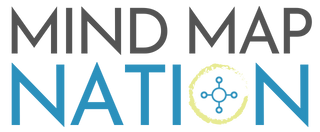Documentary Mind Map: “Meeting Jim”
The Meeting Jim mind map ended up resembling an actual map of Jim Haynes’ life journey with all its twists and turns. I realized that the film ends up where it starts!
Last time I shared the mind map and learnings from “Mission Joy” with the Dalai Lama and Desmond Tutu where we explored the concept of “selfish wise”. If Mission Joy taught me that our happiness is ultimately intertwined with others, then Jim’s story gives us the roadmap to include others in our journey. Here’s what I learned and how I’ll incorporate the lessons into my interpersonal relationships.
First a bit about Jim Haynes. Born American, he was shipped to Edinburgh, Scotland, as part of his Air Force service. There he attended Edinburgh University and in order to pay for his education, he founded the Paperback Bookshop, which kickstarted a cascade of events that led him to become one of the founding fathers of the Edinburgh Fringe Festival, the Traverse Theatre, International Times newspaper, and the London Arts Lab. When he moved to Paris, he bought a house to provide artists (and anyone really) a place to stay and make helpful connections while they found their footing. Even late in his life, he continued to host dinners every Sunday to bring diverse folks together.
Meeting Places
People need a space to gather, to converse, and even to stay if they are in transition. It needs to be comfortable enough to open up, connect, share, and grow together. I’m doing that in the form of opening up my apartment for intimate dinners and a spare bedroom for friends to stay. I’m also getting back to organizing larger scale events starting with the San Francisco Ocean Beach bonfires this summer.
In the digital era, we have more tools than ever to create these bonds. This is where the upcoming Mind Map Nation community comes in as a platform for connected thinkers to meet each other. It’s a virtual bonfire of sorts.
The film also highlighted cities as centers for people and ideas. There was no way for Jim to meet and connect so many people if he were in the countryside, as pleasant as that would be. There’s something about cities that brings out human brilliance and the density it affords makes it far easier for people to show up. I might have to postpone my tiny home in the woods dreams for a while longer!
Showing Up
Community is built on repeated, reciprocal interactions. Showing up at others’ gatherings is just as important as organizing my own. This is hard for me personally because of my introverted nature. It’s very intimidating to just show up at a party where I don’t know anyone. It’s rather easy to make excuses to stay home, especially if I’ve had a tiring work day. Yet these are the times in which I should push myself just a little to get out the door.
This also means being there for when my friends and community really need me on a 1:1 basis.
Being Present
Approaching each interaction, be it in-person or digital, with genuineness and without expectations. Jim’s example reenforces what I alluded to in What Did 10,000 Years Teach Me About Life:
“In the face of vast amounts of time, unimaginable wealth, and the highest status, what is actually meaningful and accessible for all of us? Not just accessible, but free? My conclusion was: human connections. The fact is that any of us, doesn’t matter if you’re young, old, rich, poor, what you look like, where you are in life - we can simply turn to the person next to us and make a connection, a meaningful conversation to understand their lives, and come out of it feeling better than before we went in. You don’t need to wait 10,000 years for it, pay $10 million for it, you don’t even need a degree from a fancy university. All you need is your present time.”
I used to think that these interactions were distractions to my big goals, but I’ve learned the hard way that they are actually the point. I could live for 10,000 years, make big bucks and be famous, but what’s the point if I don’t have close people to share my experiences with?
Saying Yes
Steve Ullman, Jim’s friend and the film’s producer, described Jim as the most open man he knew, always saying “yes” first.
I want to reflect on how extraordinary that is.
What if we said yes first to everything? Where would that lead us? On one hand, I’d lose all my personal time being pulled into other people’s lives. Yet he was somehow able to make time for many people and not lose focus on his own projects. I’m not Jim and don’t have his personality, so I’d need to adapt this trait to my own style in practice.
This could mean entertaining the idea of “yes” first rather than closing off the possibilities. It could be asking “why not” rather than immediately thinking of reasons to the contrary. If we’re being present with people and have the intention of showing up, it’s easier to “lean into the yes”.
This wraps up the recap of the main lessons from the two films. You’ll likely see these ideas resurfacing in my future work. hope you enjoyed the preview and definitely check out Christine’s Stone Soup Ripple for info on their future seasons. The fact that the directors, producers, and cast often join the sessions is a real treat!

